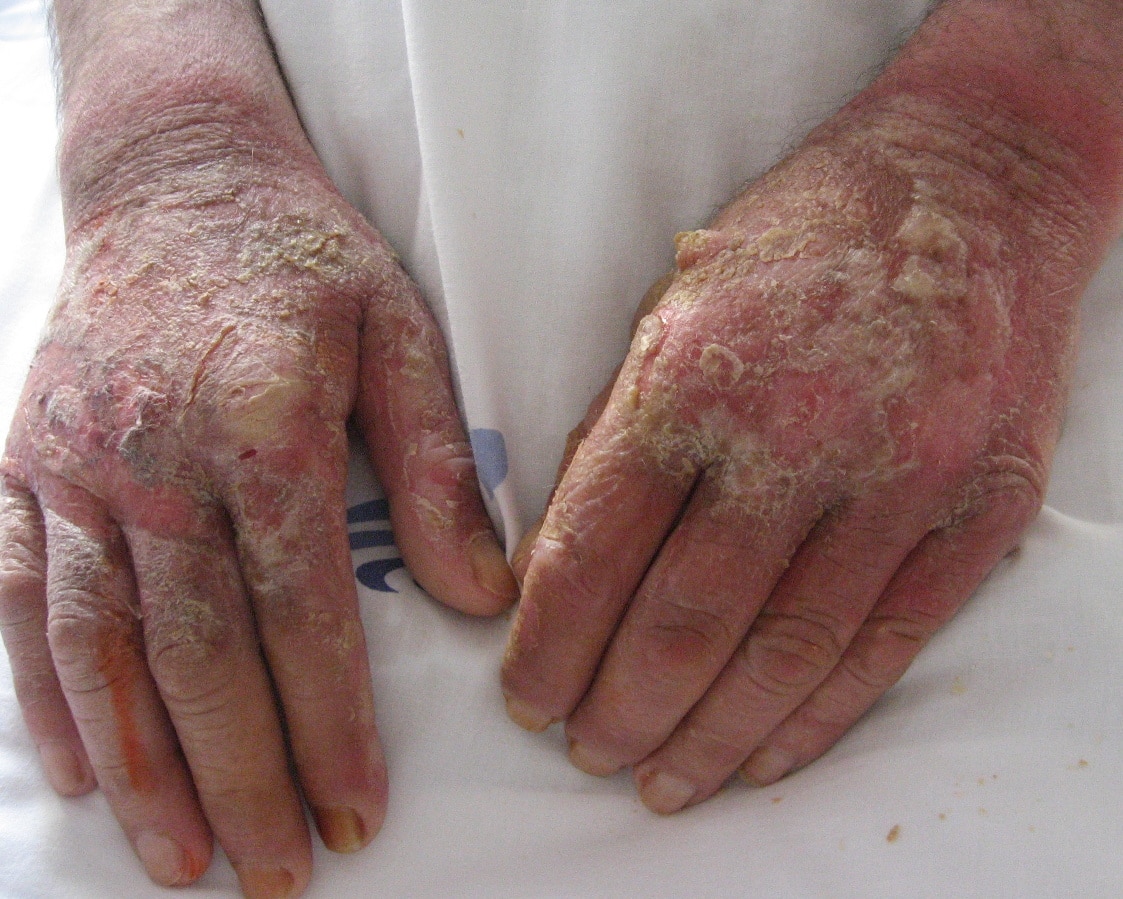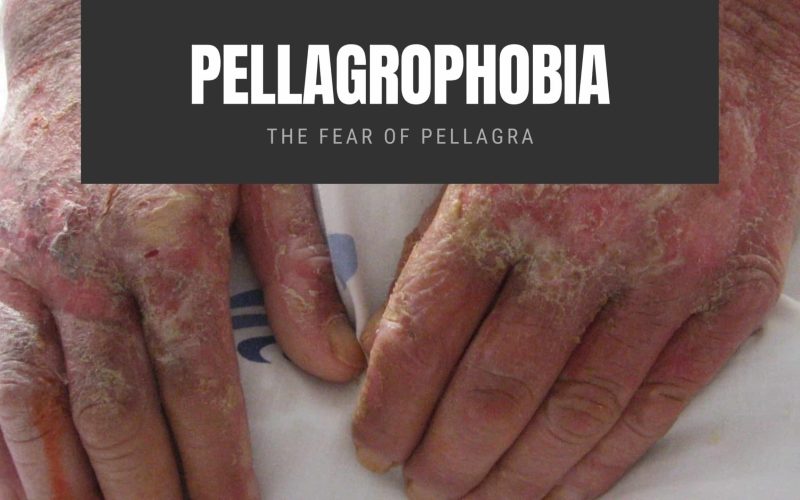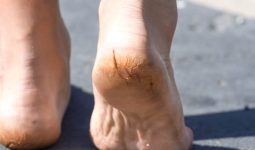Pellagrophobia is the exaggerated fear of pellagra. Pellagra is a health condition that occurs due to Niacin (Vitamin B3) deficiency.
This disease has three outstanding symptoms: dementia, diarrhea, and dermatitis. Pellagra can be life-threatening if not treated as soon as possible.
Some people develop fear of the disease because it can be severe and can cause untimely death.
The thought or sight of a pellagra patient usually triggers persons with this condition.
Sufferers of this fear often acknowledge that their fear of pellagra is irrational and exaggerated, but they cannot help it.
This condition can make the individual unable to handle their usual tasks, maintain a healthy relationship with people, reach their academic and career goals, and make them withdraw from people, including loved ones.
In summary, we can say that this phobia can be limiting. Fortunately, it can be treated.
Symptoms of Pellagrophobia
Similar to other phobias, persons with pellagrophobia experience extreme anxiety and, in severe cases, may experience panic attacks at the thought of pellagra.
People with pellagrophobia may develop obsessive or compulsive tendencies, which are characterized by frequent hand washing, obsessive disinfecting of households, and avoidance of public places.
This is because they fear they may get sick. Symptoms one suffers from pellagrophobia may include:
- Extreme anxiety at the thought of pellagra
- Inability to manage anxiety
- Full-blown panic attacks
- Air hunger
- Trembling
- Loss of control
- Dizziness
- Increased heartbeat
- Difficulty in breathing
- Muscle tension
- Nausea
- Sores on the lips, gums, or tongue
- Reduced appetite
- Trouble drinking and eating
- Nausea and vomiting
- Fear of an impending doom
- Excessive sweating
- A feeling of butterflies in the stomach
- Dryness of the mouth
- Apathy
- Depression
- Confusion, mood swings, or irritability
- Headaches
- Disorientation or delusions
If a person is diagnosed with pellagrophobia, they may continually experience some of the symptoms for six months.
Causes of Pellagrophobia
Just as with other phobias, pellagrophobia has no exact cause, although the following may serve as predisposing factors that contribute to its development.
Genetics
Experts believe that fearful genes can be passed down to offspring in the same way traits are passed down.
If you have an ancestor or ancestors who must have suffered this condition in your bloodline, then you are likely to have it, too.
Presence of Other Phobias
The presence of other phobias, such as fear of diseases or fear of death, can subsequently result in the individual developing pellagrophobia.
This is because pellagra is a disease, and it may cause death if not treated as soon as possible.
Traumatic Experience
A traumatic experience is a common factor known to cause phobias. A person who may have lost a loved one to pellagra or currently has a loved one fighting pellagra is likely to develop pellagrophobia.
Some may find such situations traumatic and depressing, which may lead to a person developing fear of such medical conditions.
Background Upbringing
Our environment significantly influences us. Someone who lives with a family member battling with this condition is likely to develop this pellagrophobia.
A person who lives in an environment with two or more people suffering from this disease may develop pellagrophobia.
Persons with this phobia could have developed it because another person had exaggerated this disease to the point that it looks like death itself.
The above situations are the influence of the environment on the way that individuals see and fear this disease.
Specific individuals in these situations may fear this disease to the point that it affects their competence in handling tasks and maintaining a healthy relationship with others. At this point, the person is said to have pellagrophobia.
Treatment of Pellagrophobia

No phobia has a precise type of treatment that has a guaranteed cure, but the following may help the patient recover:
- Getting informed: Acquiring reliable information about the disease and how to prevent it is a good start. Researching and adopting the necessary dietary changes, such as consuming foods high in or fortified with vitamin B3, reduces the likelihood of developing pellagra, which gives you confidence that you cannot suffer the disease.
- Meditation: Daily meditation helps calm your nerves and channel your mind to more positive and productive thoughts, which can help you overcome fear.
- Therapy: Sticking to your scheduled session with your consulting therapist may help you recover from pellagrophobia. Your therapist has the skills to help you overcome your fears.
Therapists are likely to use the following approaches:
- Cognitive-Behavioral Therapy (CBT): This is the most widely used approach in treating phobias. In CBT, your therapist would help you identify those negative thought patterns that are causing you to fear pellagra and then help you replace them with positive ones.
- Dialectical Behavior Therapy (DBT): Typically, DBT is used in the treatment of some personality disorders. However, it can be used in treating specific phobias, including pellagrophobia.
You may be required to join DBT groups where you will be taught coping strategies to help you control yourself even when you are facing the source of your fear.
The DBT group usually runs a six-month program, and active participation in this program may result in your recovery.
- Mindfulness-Based Stress Reduction (MBSR): MBSR is an eight-week program consisting of group meditation sessions. You will be taught to practice mindful meditation in a spacious room with others. After that, a group discussion is held for everyone to discuss their feelings.
Use of Medicine
Medicines such as:
- Anti-anxiety Drugs: This is used to lower anxiety. An example of anti-anxiety is Valium.
- Anti-depressant Drugs: This is also used to reduce anxiety. An example of an anti-depressant is Lexapro.
These medicines are not the cure for any phobia, but they help suppress the symptoms of phobias. These drugs may have side effects, and long-term use may result in addiction and dependence.
Therefore, these drugs should be taken strictly based on your doctor’s prescription.








